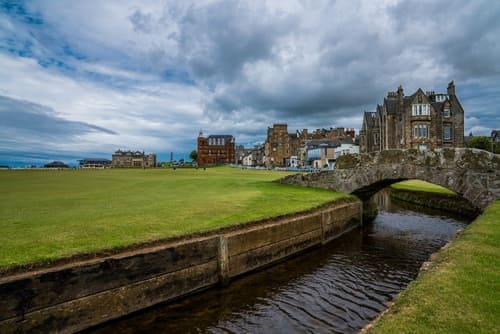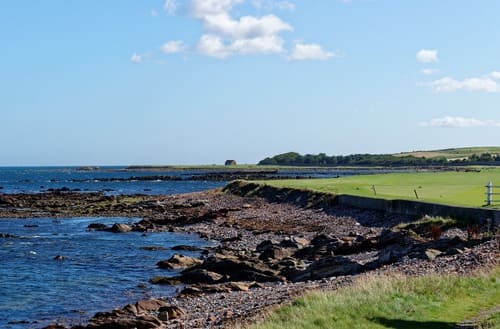Welcome to our in-depth exploration of the origin and significance of golf course links. As a trusted authority on all things golf, we aim to provide you with a comprehensive understanding of why golf courses are called links. In this article, we will delve into the history, characteristics, and cultural importance of links courses in the world of golf. Let’s embark on this fascinating journey!
Uncovering the Origins
The term “links” in the context of golf refers to a specific type of golf course characterized by its coastal location and sandy terrain. The origin of the word “links” can be traced back to the Scottish language, where it originally meant “rising ground” or “ridge.” Over time, it became synonymous with the unique coastal golf courses we know today.
Historical Significance
Birthplace of Golf
Links courses hold immense historical significance, as they are widely regarded as the birthplace of the game of golf. The coastal regions of Scotland, with their sandy soil and undulating terrain, provided an ideal landscape for early golfers to enjoy the sport. The Old Course at St Andrews, considered the “Home of Golf,” is a prime example of a historic links course that has shaped the traditions and evolution of the game.

Natural Beauty and Aesthetics
The scenic beauty of links courses adds to their significance in the world of golf. With stunning coastal views, rolling dunes, and rugged landscapes, these courses offer a unique and picturesque setting for golfers. The combination of nature’s splendor and the challenges presented by the terrain creates an unforgettable golfing experience.
Characteristics of Links Courses
Coastal Location
One defining characteristic of links courses is their proximity to the coast. These courses are typically found in coastal areas, where the land meets the sea. The coastal environment influences not only the aesthetics but also the playing conditions of the course.

Sandy Soil and Dunes
Links courses feature sandy soil, which provides excellent drainage and ensures firm playing surfaces even in wet conditions. The sandy terrain also gives rise to natural dunes, creating undulating fairways and challenging bunkers that golfers must navigate.
Wind as a Factor
The coastal location of links courses exposes them to the elements, particularly wind. Strong and unpredictable winds are a hallmark of links golf, adding an additional layer of challenge and strategic decision-making for golfers. The wind’s influence on ball flight and the need to adjust one’s game accordingly make links courses a true test of skill.
Cultural Significance
Preservation of Tradition
Links courses hold immense cultural significance as custodians of golfing tradition and heritage. Many of these courses have been in existence for centuries, preserving the game’s historical roots and maintaining the traditions associated with golf. The sense of history and connection to the past make playing on links courses a truly unique and cherished experience.
Prestige and Championship Golf
Links courses have a storied history of hosting prestigious golf championships. Major tournaments, such as The Open Championship, are often held on renowned links courses, attracting the world’s top golfers and capturing the attention of golf fans worldwide. The aura of these courses and their association with championship golf further adds to their cultural significance.
FAQs About Links Golf Courses
What does the term “links” mean in golf?
In golf, the term “links” refers to a specific type of golf course typically found in coastal areas. Links courses are characterized by their sandy soil, dunes, and natural undulating terrain.
Is there a difference between a links course and a regular golf course?
Yes, there is a difference between a links course and a regular golf course. Links courses are specifically built on coastal land and possess distinct features such as sandy soil, dunes, and natural hazards. Regular golf courses, on the other hand, can be built on a variety of terrains and may not have the coastal characteristics of links courses.
What is the origin of the word “links” in relation to golf?
The term “links” originated in Scotland, where golf has its roots. It comes from the Old English word “hlinc,” which means “rising ground” or “ridge.” It was later used to describe the coastal land where early golf courses were constructed.
Is St Andrews a links-style course?
Yes, St Andrews is considered a classic example of a links-style course. Located in Scotland, St Andrews is often referred to as the “Home of Golf.” The Old Course at St Andrews, in particular, is one of the oldest and most famous links courses in the world.
Is Augusta National a links course?
No, Augusta National Golf Club, located in Augusta, Georgia, is not a links course. It is a parkland-style course known for its meticulously manicured fairways, lush greenery, and pristine conditions. Parkland courses differ from links courses in terms of their setting and terrain, typically featuring more trees and a different style of landscaping.
Final Thoughts
In conclusion, the term “links” in the context of golf originated from Scottish language and refers to a specific type of golf course found in coastal regions. Links courses hold historical, cultural, and aesthetic significance within the world of golf.
They are not only the birthplace of the game but also represent the preservation of tradition, the embodiment of natural beauty, and the ultimate challenge for golfers.
As we appreciate the allure and historical importance of links courses, let us embrace the opportunity to experience the magic of golf on these remarkable coastal landscapes.






